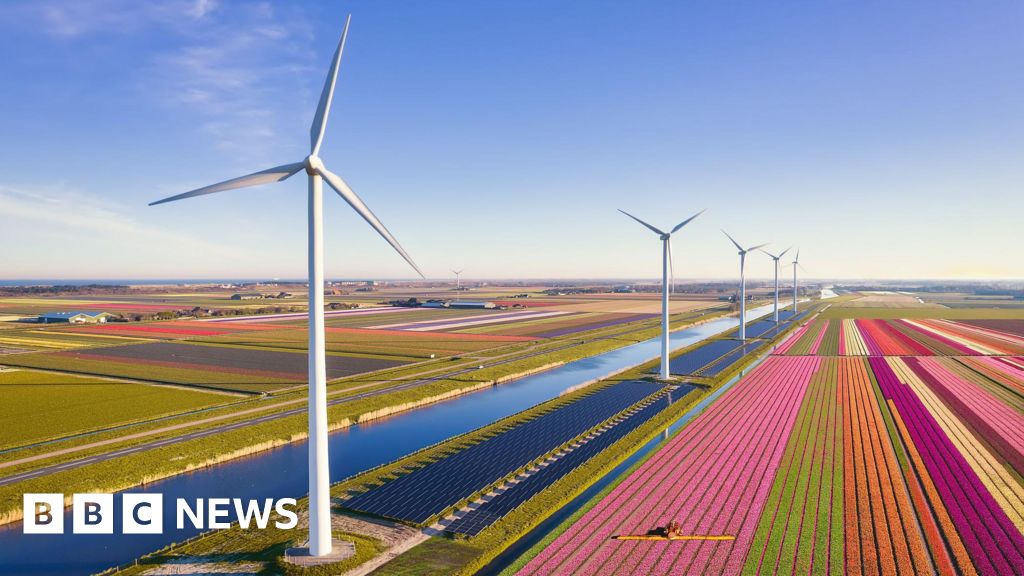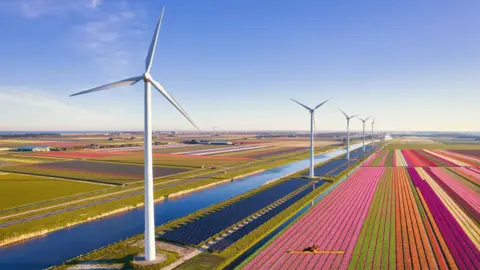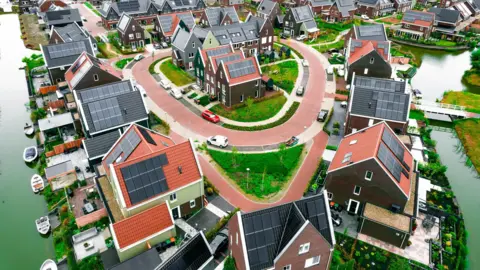Business
Retail panic: What the end of the ‘de minimis’ exemption means for brands across the globe

The de minimis exemption, an obscure trade law provision that has simultaneously fueled and eroded businesses across the globe, officially came to an end on Friday following an executive order by President Donald Trump.
For nearly a decade, shipments valued under $800 were allowed to enter the country virtually duty-free and with less oversight. Now, those shipments from the likes of Tapestry, Lululemon and just about any other retailer with an online presence will be tariffed and processed in the same way that larger packages are handled.
In May, Trump ended the exemption for goods coming from China and Hong Kong, and on July 30 he expanded the rollback to all countries, calling it a “catastrophic loophole” that’s been used to evade tariffs and get “unsafe or below-market” products into the U.S.
The de minimis exemption had previously been slated to end in July 2027 as part of sweeping legislation passed by Congress, but Trump’s executive order eliminated the provision much sooner, giving businesses, customs officials and postal services less time to prepare.
“The ending of that under-$800-per-person-per-day rule, from a global perspective, is about to probably cause a bit of pandemonium,” said Lynlee Brown, a partner in the global trade division at accounting firm EY. “There’s a financial implication, there’s an operational implication, and then there’s pure compliance, right? Like, these have all been informal entries. No one’s really looked at them.”
Already, the sudden change has snarled supply chains from France to Singapore and led post offices across the world to temporarily suspend shipments to the U.S. so they can ensure their systems are updated and able to comply with the new regulations.
It’s forced businesses both large and small to rethink not just their supply chains, but their overall business models, because of the impact the change could have on their bottom lines – setting off a panic in boardrooms across the country, logistics experts said.
“Obviously it’s a big change for operating models for companies, not just the Sheins and the Temus, but for companies that have historically had e-com and brick-and-mortar stores,” Brown said.
The change also means consumers, already are under pressure from persistent inflation and high interest rates, could now see even higher prices on a wide range of goods, from Colombian bathing suits to specialty ramen subscription boxes shipped straight from Japan.
The end of de minimis could cost U.S. consumers at least $10.9 billion, or $136 per family, according to a 2025 paper by Pablo Fajgelbaum and Amit Khandelwal for the National Bureau of Economic Research. The research found low-income and minority consumers would feel the biggest impact as they rely more on the cheaper, imported purchases.
Tailoring supply chains
Popularized by Chinese e-tailers Shein and Temu, use of the de minimis exemption has exploded in the last decade, ballooning from 134 million shipments in 2015 to more than 1.36 billion in 2024. Before the recent change to limit its use, U.S. Customs and Border Protection said it was processing more than 4 million de minimis shipments into the country each day.
A 2023 House report found more than 60% of de minimis shipments in 2021 came from China, but because the packages require less information than larger containers, very little information is known about their origins and the types of goods they contain. That opacity is one of the key reasons why both former President Joe Biden and Trump sought to curtail or end the exemption.
Both administrations have said that the exemption was overused and abused and that it’s made it difficult for CBP officials to target and block illegal or unsafe shipments coming into the U.S. because the packages aren’t subject to the same level of scrutiny as larger containers.
“We didn’t have any compliance information … on those shipments, and then that is where the danger of drugs and whatnot being in those shipments” comes in, said Irina Vaysfeld, a principal in KPMG’s trade and customs practice.
The Biden administration particularly focused on how the exemption allowed goods made with forced labor to make it into the country in violation of the Uyghur Forced Labor Prevention Act. Meanwhile, Trump has said the exemption has been used to ship fentanyl and other synthetic opioids into the U.S. In a fact sheet published on July 30, the White House said 90% of all cargo seizures in fiscal 2024, including 98% of narcotics seizures and 97% of intellectual property rights seizures, originated as de minimis shipments.
Across the globe, it’s common for countries to allow low-value shipments to be imported duty-free as a means to streamline and facilitate global trade, but typically, it’s for packages valued around $200, not $800, said EY’s Brown.
Until 2016, the U.S. threshold for low-value shipments was also $200, but it was changed to $800 when Congress passed the Trade Facilitation and Trade Enforcement Act, which sought to benefit businesses, U.S. consumers and the overall U.S. economy, according to the Congressional Research Service. It said higher thresholds provide a “significant economic benefit” to both business and shoppers and thus, the overall economy.
While well intentioned, the law came with unintended consequences, said Brown.
The “rise in value, from $200 to $800, just made it kind of like a free for all to say, ‘OK, everything come in,'” she said.
Eventually companies designed supply chains around the exemption: They set up bonded warehouses, where duties can be deferred prior to export, in places like Canada and Mexico and then imported goods in bulk to those regions before sending them across the border one by one, duty-free, as customer orders rolled in, said Brown.
“Companies have really laid out their supply chain in a very specific way [around de minimis] and that’s really the crux of the issue,” said KPMG’s Vaysfeld. “The way that the supply chain has been laid out now may need to change.”
The impact on the retail industry
Until the rise of Shein and Temu, the de minimis exemption was rarely discussed in retail circles. Soon, the e-commerce behemoths began facing widespread criticism for their use of what many called a loophole.
In 2023, the House Select Committee on the Chinese Communist Party released a report on Shein and Temu and said the two companies were “likely responsible for more than 30 percent of all packages shipped to the United States daily under the de minimis provision, and likely nearly half of all de minimis shipments to the U.S. from China.”
The revelation sparked widespread consternation among retail executives, lobbyists and government officials who said the companies’ use of the exemption was unfair competition.
However, behind closed doors, companies large and small began mimicking the same model after realizing how it could reduce the steep costs that come along with selling goods online.
Direct-to-consumer companies that only have online presences have relied on it more heavily, so much so that their businesses may not work without it, said Vaysfeld.
“Some of the companies we’ve spoken to, they’ve modeled out, if the tariffs continue for one year, for two years, how does that impact their profitability, and they know how long they can last,” said Vaysfeld. “These aren’t the huge companies, right? These are the smaller companies. … Depending on what country they’re sourcing from or where they’re manufacturing, it could really impact their profitability that they can’t stay in business for the long term.”
While smaller, digital companies are more exposed, “pretty much most companies that you can think of” had been using the exemption in some form before it ended, said Vaysfeld.
Take Coach and Kate Spade’s parent company Tapestry: About 13% to 14% of the company’s sales were previously covered under de minimis and will now be subject to a 30% tariff, according to an estimate by equity research firm Barclays.
On the company’s earnings call earlier this month, Chief Financial Officer Scott Roe said tariffs will hit its profits by a total of $160 million this year, including the impact of the end of de minimis. That amounts to about 2.3% of margin headwind, he said.
Shares of the company fell nearly 16% the day that Tapestry reported the profit hit.
In a statement, Roe said Tapestry used de minimis to help support its strong online business, adding it is a practice that “many companies with sophisticated supply chains have been doing for years.”
To help offset its termination, he said Tapestry is looking for ways to reduce costs and is leaning on its manufacturing footprint across many different countries.
Canadian retailer Lululemon is another company that uses de minimis, according to Wells Fargo. Last week, the bank cut its price target on the company’s stock from $225 to $205, citing the end of de minimis. In the note, Wells Fargo analyst Ike Boruchow said the equity research firm sees a potential 90 cent to $1.10 headwind to Lululemon’s earnings per share from the de minimis elimination.
Lululemon declined to comment, citing the company’s quiet period ahead of its reporting earnings.
The National Retail Federation, the industry’s largest trade organization, has not taken a position in favor of or against the exemption. It has members who both supported and opposed the policy, said Jonathan Gold, vice president of supply chain and customs policy at NRF.
Retailers of all sizes, including independent sellers with digital storefronts, have used the approach as “a convenient way to get products to the consumer” for less, Gold said.
“Their costs are going to go up and those costs could be passed on to the consumer at the end of the day,” Gold said.
Marketplace impact
The most acute impact of the end of de minimis is expected to be felt on online marketplaces where millions of small businesses sell goods like Etsy, eBay and Shopify and used de minimis to defray costs when sending online orders from other parts of the globe to the U.S.
American shoppers have gotten used to buying artwork, coffee mugs, T-shirts and other items from merchants outside the country without paying duties. With that tariff exemption gone, consumers could face higher costs and a more limited selection of items to choose from.
Etsy, eBay and some other retailers sought to defend the loophole prior to its removal, submitting public comments on proposed de minimis regulation by the CBP. An eBay public policy executive said the company was concerned that restrictions to de minimis “would impose significant burdens on American consumers and importers.”
Etsy’s head of public policy, Jeffrey Zubricki, said the artisan marketplace supports “smart U.S. de minimis reform,” but that it was wary of changes that could “disproportionately affect small American sellers.”
“These exemptions are a powerful tool that help small creators, artisans and makers participate in and navigate cross-border trade,” Zubricki wrote in a March letter to CBP.
An Etsy spokesperson declined to comment on the policy change. Etsy CFO Lanny Baker said at a Bernstein conference in May that transactions between U.S. buyers and European sellers make up about 25% of the company’s gross merchandise sales.
EBay didn’t immediately provide a comment in response to a request from CNBC. The company warned in its latest earnings report that the end of de minimis outside of China could impact its guidance, though CEO Jamie Iannone told CNBC in July that he believes eBay is generally “well suited” to navigate the shifting trade environment.
Some eBay and Etsy sellers based in the U.K., Canada and other countries are temporarily closing off their businesses to the U.S. as they work out a plan to navigate the higher tariffs. Blair Nadeau, who owns a Canadian bridal accessories company, was forced to take that step this week.
“This is devastating on so many levels and millions of small businesses worldwide are now having their careers, passions and livelihoods threatened,” Nadeau wrote in an Instagram post on Tuesday. “Just this past hour I have had to turn away two U.S. customers and it broke my heart.”
Nadeau sells her bespoke wedding veils, jewelry and hair adornments through her own website and on Etsy, where 70% of her customer base is in the U.S. The de minimis provision had been a “lifeline” for many Canadian businesses to get their products in the hands of American consumers, Nadeau said in an interview.
“This is really hitting me,” Nadeau said. “It’s like all of a sudden 70% of your salary has been removed overnight.”
In the absence of de minimis, online merchants are faced with either paying import charges upfront and potentially passing those costs on to shoppers through price hikes, or shipping products “delivery duty unpaid,” in which case it’s the customer’s responsibility to pay any duties upon arrival.
Alexandra Birchmore, an artist based in the Cotswolds region of England, said she expects to raise the price of her oil paintings on Etsy by 10% as a result of paying the duties upfront.
“At the moment every small business forum I am on is in chaos about this,” Birchmore said. “It looks to me to be a disaster where no one benefits.”
Market share shifts
The disruption could end up being a boon for the likes of Amazon and Walmart. U.S. consumers may turn to major retailers if they face steeper prices elsewhere, as well as potential shipping delays due to backlogs or other issues at the border.
Amazon, in particular, has already proven resilient after the U.S. axed the de minimis provision for shipments from China and Hong Kong in May. The company’s sales increased 13% in the three-month period that ended June 30, compared with 10% growth in the prior quarter. Amazon’s unit sales grew 12%, an acceleration from the first quarter.
Both Amazon and Walmart have fulfillment operations in the U.S. that allow overseas businesses to ship items in bulk and store them in the companies’ warehouses before they’re dispatched to shoppers. Shein and Temu largely eschewed the model in the past in favor of the de minimis exception, but they’ve since moved to open more warehouses in the U.S. in the wake of rising tariffs.
Since the exemption ended on Chinese imports in May, the impact on Shein and Temu has been swift. Temu was forced to change its business model in the U.S. and stop shipping products to American consumers from Chinese factories.
The end of de minimis, as well as Trump’s new tariffs on Chinese imports, also forced Temu to raise prices, rein in its aggressive online advertising push and adjust which goods were available to American shoppers.
The Financial Times reported on Tuesday that Temu has resumed shipping goods to the U.S. from Chinese factories and will also increase its advertising spend following what it called a “truce” between Washington and Beijing.
Temu didn’t return a request for comment.
Meanwhile, Shein has been forced to raise prices and daily active users on both platforms in the U.S. have fallen since the de minimis loophole was closed, CNBC previously reported. Temu’s U.S. daily active users plunged 52% in May versus March, while Shein’s were down 25%, according to data shared with CNBC by market intelligence firm Sensor Tower.
Correction: This article has been updated to correct the name of the Uyghur Forced Labor Prevention Act.
Business
Galeries Lafayette sets foot in India with Mumbai store – The Times of India

MUMBAI: Parisian luxury department store Galeries Lafayette is tapping India for growth, a market it said lacks luxury retail avenues for high spending consumers who shop for a spate of labels across pricey fashion houses and shopping stores abroad.The retailer’s flagship store in Paris’s Boulevard Haussmann is the second most-visited tourist spot in the French capital after Eiffel Tower and attracts 35 million visitors a year, half of which are foreigners.Galeries Lafayette, which is launching in India through partnership with the Aditya Birla Group, will open its first store in Mumbai early next month, after eight years of studying the local market and consumer nuances.“India is a key and strategic country. It also has great opportunities in terms of growth. Indian consumers are already very interested in buying luxury brands and products. They consume them not only in India but also abroad — Dubai, Singapore, the UK, Paris and especially in Galeries Lafayette. Clearly, there is a lack of offer inside India…there are no (luxury) department stores here,” Galeries Lafayette CEO Arthur Lemoine, told TOI in an interview here.The India foray, announced three years back, comes at a time when US tariff turmoil has clouded global growth prospects, nudging companies to review strategies.Of the 67 Galeries Lafayette stores globally, 58 are in home market France with the rest of the nine outlets spread across Asia including China, Indonesia and Dubai.The luxury brand has stitched a 20-year licensing agreement with the Aditya Birla Group. “Beyond the year which are written in the contract, we are here to build the future together,” said Lemoine. The four-storey department store in south Mumbai will house a broad range of global products — from bags to beauty, apparel and accessories. From a Rs 25-lakh bag to a Rs 3,000 lipstick, the idea is to cater to the luxury consumers but also tapping into the premium cohort who are willing to upgrade to high-end brands.“Luxury in our country today stands at the threshold of transformation,” said Aditya Birla Group chairman Kumar Mangalam Birla, adding that “In the span of less than a decade, the market is set to grow over four-fold from $20 billion to almost $90 billion by 2030.”The brand play will be omni-channel to give access to a wider set of affluent consumers, many of whom are sitting in non-metros. “In India, we have pockets of consumption all across the country,” said R Sathyajit, CEO, international brands at Aditya Birla Fashion & Retail adding that the company’s own website will be launched in a couple of months.Delhi will house the next Galeries Lafayette store. Currently, the assortment at the store is global with a tilt towards French and Parisian brands. “Over a period of time, we would also like to be a platform for emerging designers in India as well. The beauty of a department store is that it evolves with time, reflecting changing generations, tastes,” Sathyajit said.
Business
Netherland’s renewables drive putting pressure on its power grid

John LaurensonBusiness reporter, Rotterdam
 AFP via Getty Images
AFP via Getty ImagesIn a Dutch government TV campaign called “Flip the Switch” an actress warns viewers about their electricity usage.
“When we all use electricity at the same time, our power grid gets overloaded,” she says. “This can cause malfunctions. So, use as little electricity as possible between four and nine.”
It is the sign that, in one of the most-advanced economies in the world, something has gone wrong with the country’s power supply.
The Netherlands has been an enthusiastic adopter of electric cars. It has the highest number of charging points per capita in Europe.
As for electricity production, the Netherlands has replaced gas from its large North Sea reserves with wind and solar.
So much so that it leads the way in Europe for the number of solar panels per person. In fact, more than one third of Dutch homes have solar panels fitted.
The country is also aiming for offshore wind farms to be its biggest source of energy by 2030.
This is all good in environmental terms, but it’s putting the Dutch national electricity grid under enormous stress, and in recent years there have been a number of power cuts.
The problem is “grid congestion”, says Kees-Jan Rameau, chief executive of Dutch energy producer and supplier Eneco, 70% of whose electricity generation is now solar and wind.
“Grid congestion is like a traffic jam on the power grid. It’s caused by either too much power demand in a certain area, or too much power supply put onto the grid, more than the grid can handle.”
He explains that the problem is that the grid “was designed in the days when we had just a few very large, mainly gas-fired power plants”.
“So we built a grid with very big power lines close to those power plants, and increasingly smaller power lines as you got more towards the households.
“Nowadays we’re switching to renewables, and that means there’s a lot of power being injected into the grid in the outskirts of the network where there are only relatively small power lines.”
And these small power lines are struggling to cope with all the electricity coming in from wind turbines and solar panels scattered around the country.
 AFP via Getty Images
AFP via Getty ImagesDamien Ernst, professor of electrical engineering at Belgium’s Liege University, is one of Europe’s leading experts on electricity grids. He says it is an expensive problem for the Netherlands to solve.
“They have a grid crisis because they haven’t invested enough in their distribution networks, in their transmission networks, so they are facing bottlenecks everywhere, and it will take years and billions of dollars to solve this.”
Prof Ernst adds that it is a Europe-wide issue. “We have an enormous amount of solar panels being installed, and they are installed at a rate that is much, much too high for the grid to be able to accommodate.”
At Eneco’s headquarters in Rotterdam, Mr Kees-Jan Rameau highlights a large control panel that the company calls its “virtual power plant” and “the brain of our operations”. It is used to help balance the grid, avoiding blackouts.
When electricity generation is too high across the Netherlands, it enables Eneco to turn wind turbines out of the wind and turn off solar panels.
As for when demand for electricity is too high, it lowers the power to customers who have accepted to allow Eneco to stop or reduce their electricity supply when the network is under strain in exchange for lower prices.
But for homes and companies who want to scale-up their use of electricity with a new or larger grid connection, that, increasingly, is just not possible.
“Often consumers want to install a heat pump, or charge their electric vehicle at home, but that requires a much bigger power connection, and increasingly they just cannot get it,” says Mr Kees-Jan Rameau.
He adds that it is worse for businesses. “Often they want to expand their operations, and they just cannot get extra capacity from the grid operators.
And it has got to the point where even new housing construction in the Netherlands is becoming increasingly difficult, because there’s just no capacity to connect those new neighbourhoods to the grid.”
Those people, and companies, end up on waiting lists for a number of years. At the same time there are also waiting lists for those who want to supply the grid with power, such as a new home fitted with solar panels on its roof.

Tennet, the government-owned agency that runs the Netherlands’ national grid, says that 8,000 companies are currently waiting to be able to feed in electricity, while 12,000 others are waiting for permission to use more power.
Some sectors of the Dutch economy are warning that it is hampering their growth. “Grid congestion is putting the future of the Dutch chemical industry at risk… while in other countries it will be easier to invest,” says the President of the Dutch Chemical Association Nienke Homan.
So, was all this avoidable? “In hindsight I think almost every problem is avoidable,” says Mr Kees-Jan Rameau.
He adds that following the 2015 Paris Agreement on trying to tackle climate change, “we were very much focussing on increasing the renewable power generation side. But we kind of underestimated the impact it would have on the power grid.”
Tennet is now planning to spend €200bn ($235bn; £174bn) on reinforcing the grid, including laying some 100,000km (62,000 miles) of new cables between now and 2050.
That’s a huge amount of money, but there is also a big cost to not spending it. Grid congestion is costing the Dutch economy up to €35bn a year, according to a 2024 report from management consultancy group Boston Consulting Group.
Eugene Beijings, who is in charge of grid congestion with Tennet, says that patience is sadly required. “To strengthen and reinforce the grid, we need to double, triple, sometimes increase tenfold the capacity of the existing grid.
“And it’s taking on average about 10 years to do a project like that before it goes live, of which the first eight are legislation and getting the rights to put cables in the ground with all property owners. And only the last two years are the construction period.
“And meanwhile the energy transition is going that fast that we cannot cope with it, with the existing grid. So every additional request [to connect] is adding to the waiting list.”
 Zet ook de knop om
Zet ook de knop omAt the Dutch energy ministry, which is actually called the Ministry for Climate Policy and Green Growth, the Minister Sophie Hermans wasn’t available for an interview. But her office gave a statement:
“In hindsight, the speed at which our electricity consumption has grown might have been collectively underestimated in the past by all parties involved. It is also hard to predict where the growth will occur first, as this results from individual companies/sectors and households.”
As for solutions, the ministry says it has a “National Grid Congestion Action Plan” focussed on adjusting legislation so grid expansion permits can be granted more quickly.
It is encouraging people to make better use of the existing grid with, for example, its Flip the Switch campaign.
And the financial incentive for people who feed their surplus solar electricity into the grid is being reduced to almost nothing. In some cases, people will even have to pay to feed solar power into the grid.
Business
Baroness Mone-linked PPE firm misses deadline to pay £122m

A company linked to Baroness Michelle Mone has failed to meet a deadline to repay £122m for breaching a Covid-19 personal protective equipment (PPE) contract.
The Department of Health and Social Care (DHSC) won a legal case earlier this month against PPE Medpro, a consortium led by Lady Mone’s husband Doug Barrowman, over claims the PPE did not comply with relevant healthcare standards.
A High Court judge ruled some of the company’s gowns they supplied were not “sterile”.
Health and Social Care Secretary Wes Streeting said the government would “pursue PPE Medpro with everything we’ve got to get these funds back” after the company failed to pay the damages cost by 16:00 BST on Wednesday.
PPE Medpro entered administration on 30 September, the day before the court judgement.
Streeting said: “At a time of national crisis, PPE Medpro sold the previous government substandard kit and pocketed taxpayers’ hard-earned cash.
“PPE Medpro has failed to meet the deadline to pay – they still owe us over £145 million, with interest now accruing daily.”
The firm was ordered to pay interest of £23.6m, which means the total sum owed is £145.6m.
According to the DHSC, this sum will accrue interest at 8% per year from Thursday until it is fully paid.
Forvis Mazars, one of the joint administrators appointed to take control of the business and recover money owed to creditors, declined to comment.
The National Crime Agency (NCA) previously said it was investigating the PPE Medpro case.
Mr Barrowman’s spokesman had said £83m of the government deal was paid to other companies but it is unclear whether they are being looked at by the NCA.
PPE Medpro was awarded a government contract in 2020 to supply PPE after being recommended by Baroness Mone.
However, after ordering 25 million sterile gowns from PPE Medpro, the government later launched legal action in 2022 through the High Court, claiming the gowns did not comply with the agreed contract.
PPE Medpro argued it had complied with the contract and that the gowns were sterile.
According to the company’s most recent accounts for the period ending 31 July, the business had £666,025 in net assets.
The document filed to Companies House also mentioned how the firm had used about £4.2m in reserves to fight the legal dispute.
Since the court judgement, Baroness Mone has faced cross-party calls for her to be stripped of her peerage.
However, peerages can only be removed by an act of Parliament.
-

 Business1 week ago
Business1 week agoTata Capital IPO: Rs 15,512 crore IPO fully subscribed; stock market debut on Oct 13 – The Times of India
-

 Tech6 days ago
Tech6 days agoApple Took Down ICE-Tracking Apps. Their Developers Aren’t Giving Up
-

 Sports1 week ago
Sports1 week agoBills benched WR Coleman for disciplinary reasons
-

 Tech6 days ago
Tech6 days agoMen Are Betting on WNBA Players’ Menstrual Cycles
-

 Tech1 week ago
Tech1 week agoAnthropic to open India office as AI demand grows
-

 Tech1 week ago
Tech1 week agoAs long as the cybercriminals’ business model works, companies are vulnerable to attack
-

 Fashion1 week ago
Fashion1 week agoDepop still loss-making but revenue surges
-

 Tech1 week ago
Tech1 week agoIT Sustainability Think Tank: Don’t believe Big Tech’s green IT hype | Computer Weekly













